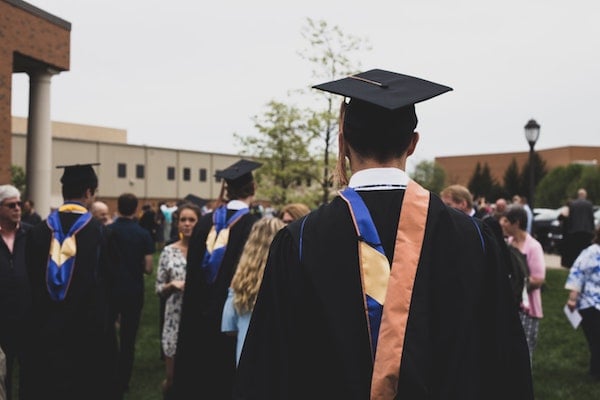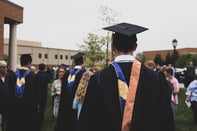Published on
[From the Archives] Engaging Alumni Through Your CE Division

When institutions engage with their alumni, people always assume it’s only because they want donations. But what really needs recognition here is the opportunity for schools to establish a better relationship with them, turning students into lifelong learners. To really benefit from this opportunity, institutions should look to their CE divisions to leverage not only their programming specially created for the lifelong learner but also their expertise in communicating with these learners and keeping them engaged. In this interview, Karen Muncaster discusses how CE divisions can work with the main campus to provide a consistent alumni engagement strategy, what the operations behind it look like, and how an institution can illustrate its value to alumni after graduation.
The EvoLLLution (Evo): What role should continuing education divisions play in supporting alumni engagement efforts for their main campus, in an ideal world?
Karen Muncaster (KM): In an ideal world, it should be a win-win situation.
Continuing studies units need to be really good university citizens because we are always marketing internally as well as externally. Referring to Continuing Education as only an evening school is derogatory. Many continuing studies units have pivoted to offer challenging, rigorous, and relevant programming. Alums don’t often know that. They might not even have known that the unit existed when they attended, let alone what it did.
Part of being a good university citizen is offering a solid, significant benefit to alumni. We’re not asking them for anything; we’re saying, “You graduated from this institution. Now look at what else we can do for you. We can help you upskill or change your career trajectory.” We have an obligation to provide these opportunities to our alumni.
It’s also incumbent on us to increase our enrollments. Continuing studies units can often bring in students without having to spend big marketing dollars, because alumni already have a positive view of the institution and its academics. When we sent out a newsletter to alumni last semester to tell them what we have to offer, we had two alums contact the director of our master’s in leadership and administration program to say they didn’t know we had a part-time, online degree program in this area. They thought it was really cool—and they were both in senior positions in their fields. One just needed the credential for his CV, but the other was seriously looking for a new skillset to make him more competitive, and both were just delighted that their alma mater had a part-time, online program that fit their needs.
Evo: What are the roadblocks to establishing this active partnership between continuing ed divisions and their colleagues in alumni relations and across the main campus?
KM: Some CFOs may view a tuition discount as lost revenue, instead of seeing that it brings in additional revenue that you wouldn’t otherwise have had. There’s also some sensitivity around the quality of continuing ed units. Some are more challenging than others, so there can be a fear that the alumni will find that the continuing studies part-time master’s program isn’t challenging enough, which would have a negative impact on their view of the institution as a whole.
When we first initiated our discount for alumni, we had to negotiate the amount. During the first semester out of the gate, some alumni who were already enrolled in our graduate programs asked if they could get the discount retroactively, so communication is critical. It requires a good partnership with the alumni division to help get the word out, which is challenging because every school and division needs their help to reach alumni, and it’s the alumni affairs group that has to manage that flow of communication, so their audiences are not overwhelmed. You have to be respectful of their needs and concerns, and make it easy for them to say, “Oh, you already used the right language and in our own voice. We can include it in our newsletter and put it on our website. And we don’t need to send out a separate email every time you want to do something.”
Evo: What advice would you share with folks who are trying to establish the quality of programming offered by continuing ed to their colleagues who might not understand what’s going on over in the extended learning shop?
KM: Trust takes time to build, and it has to be built on reality. We try to share stories of alumni at other schools within the university who are now in our graduate programs. We share their comments and news of where their careers are now taking them. And we invite faculty from other schools to teach an occasional course. Once they teach in the programs—especially if the course is in the middle of a program’s timeline—they can see that these are high-quality students who are really firing on all cylinders. Then they realize that these are students who are also working full time, who have families, who are contributing to their communities—so they have a lot to add to classroom discussions. That’s an incentive for faculty from other parts of the institution; it’s fun to teach a student who already has life experience and who has reflected on some of the practices that you’re talking about in theory.
But strengthening relationships is not something you can do on a dime; you need to keep feeding the rest of the institution information about the positive experiences that both students and faculty have had with you.
Evo: From an operational perspective, is there any difference for you and the continuing ed team in serving an alumni population as opposed to a more traditional audience of non-traditional students?
KM: Every institution has its quirks when it comes to handling discounts in their system. A traditional institution like ours is not set up to offer discounts because the university is largely dealing with students who have paid their tuition for the whole semester. So, when you’re talking about processing one or two courses at a 10 or 15% discount, it requires working across a variety of divisions to accommodate the change.
This is where continuing studies units need to focus on collaboration and finding ways to add value to the rest of the institution. So when you ask the comptroller’s office for help, saying, “Look, I understand that this is a pain, and it’s going to take several hours to figure out, and take a few hours every week to even keep it running properly, to pull the reports and make it happen,” they see the value of that work as well. They don’t feel taken advantage of—because nobody wants to them to feel that way.
We need to frame the request so it conveys that these were our students, and they’ve come back for more, so can we all sit down and figure out how to accommodate them. If you have historically been a collaborative partner, you’re more likely to make progress.
It’s the small operational details that can make this step really challenging. I’ve worked at all different levels at different kinds of institutions, so I may be a little more conscious of operations than others, and even so, I don’t know all the details. But I have amazing staff who help me determine the return on investment, whether this is something that we really could do and whether we will harm certain relationships at the institution that we don’t want to risk. So, it’s necessary to have a really good team that understands how things works.
Evo: How do pathways improve the approach they take to alumni engagement and alumni affairs when you’re also providing this ongoing programmatic value through continuing ed?
KM: When alumni come through the institution a second time, within a different format and in an innovative, industry-aligned program—and perhaps at a point in their life when they can really see a direct monetary payoff—it just continues to reinforce that they made a good choice the first time they came through. If you go through our applied economics program and you end up working at the World Bank, pulling down a good salary, you’re more grateful than ever to your alma mater, which could translate into support for the university as a whole. And it can enhance the value of a degree if your alumni say in their workplace, “I went back to school, and it was convenient because it was part-time and online, and I got such a good education that it helped me acquire this new job or raise. You ought to think about going there as well.” It enhances reputation and can open up your institution to new audiences.
Evo: Is there anything you’d like to add about the work that it takes to build a foundational partnership between continuing ed and alumni relations?
KM: As with any group you work with—especially when you’re the non-traditional-student division— you need to provide value. You must consider what’s in it for them. We established pretty quickly what was in it for us, but before I sat down with the AVP of alumni, I thought through very carefully the potential benefits for her. We framed it so she could see the value to her group, and we made it easy for her. We said, “We’ll write the communications. And we’ll also amplify any of your messages about other alumni benefits or events on our communication channels. We’ll do whatever we can to be helpful.”
This interview was edited for length and clarity.
Disclaimer: Embedded links in articles don’t represent author endorsement, but aim to provide readers with additional context and service.



